




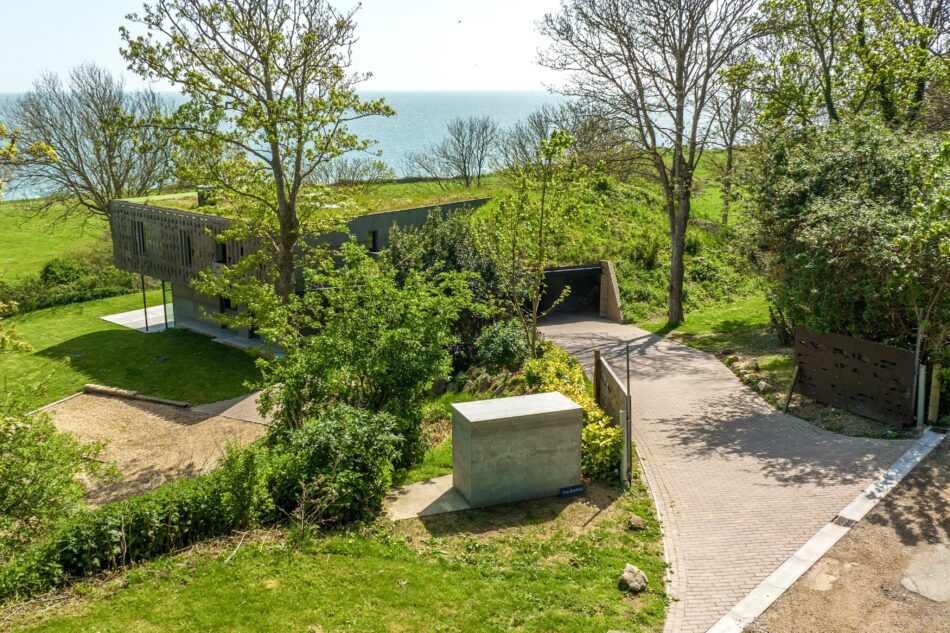












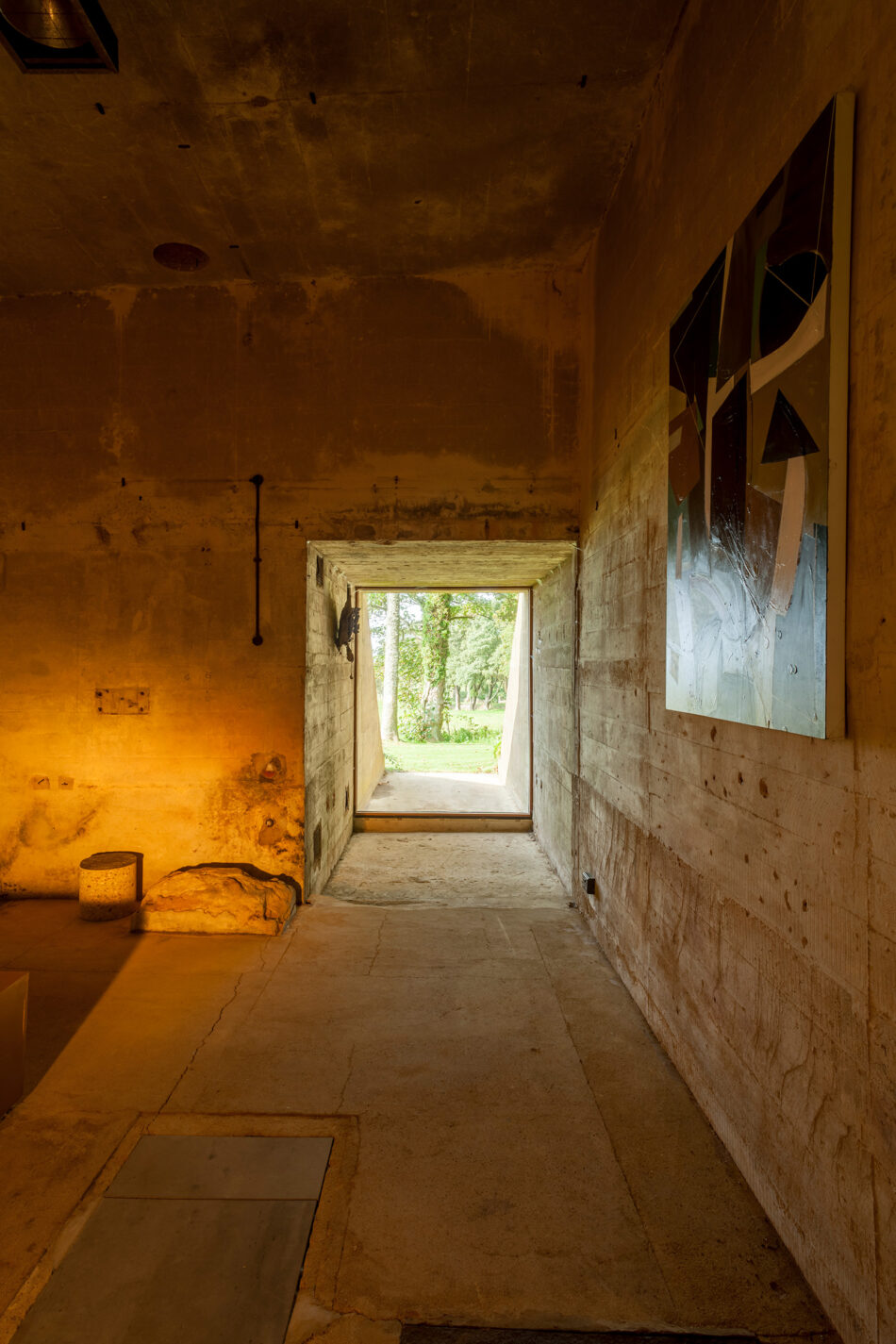
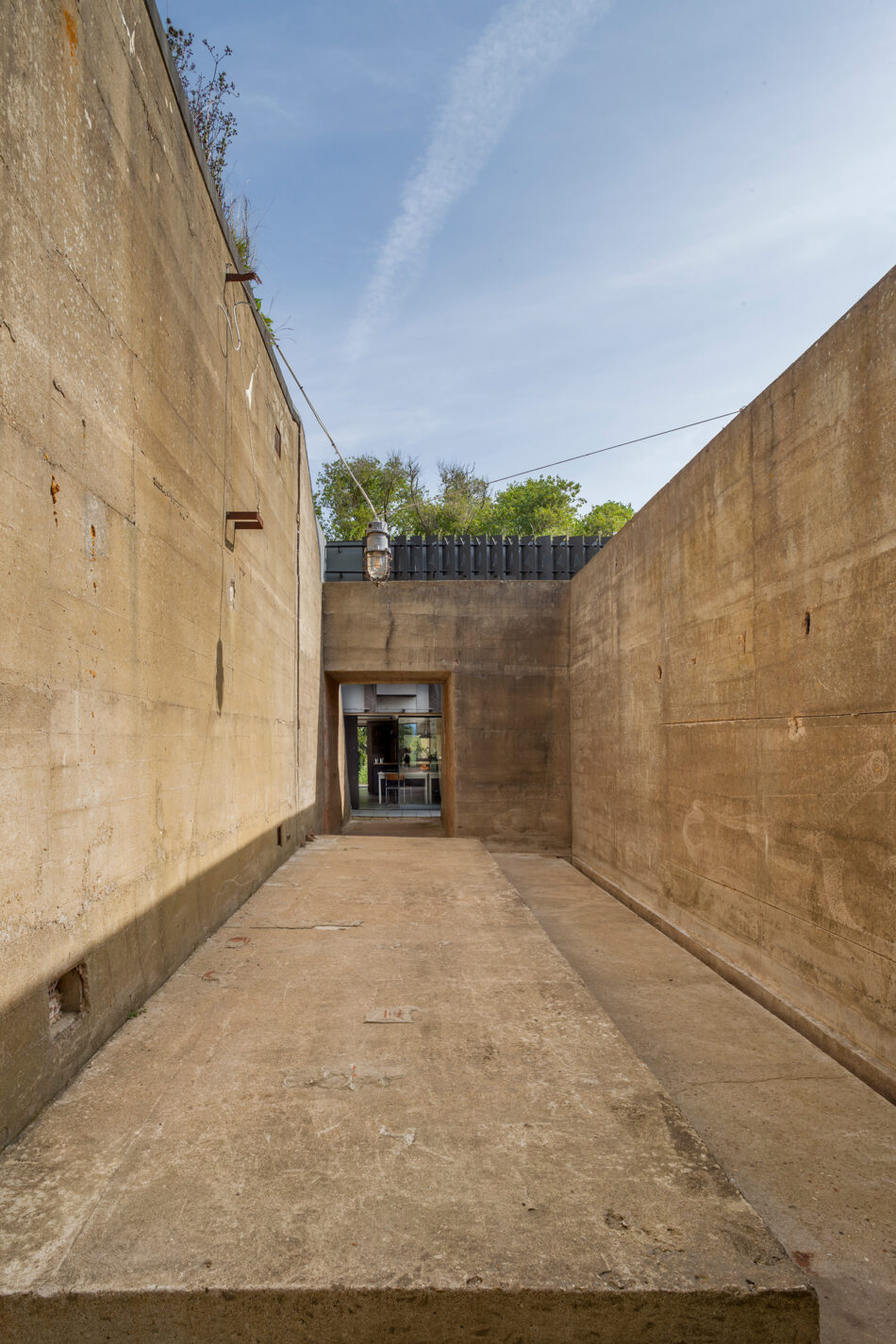









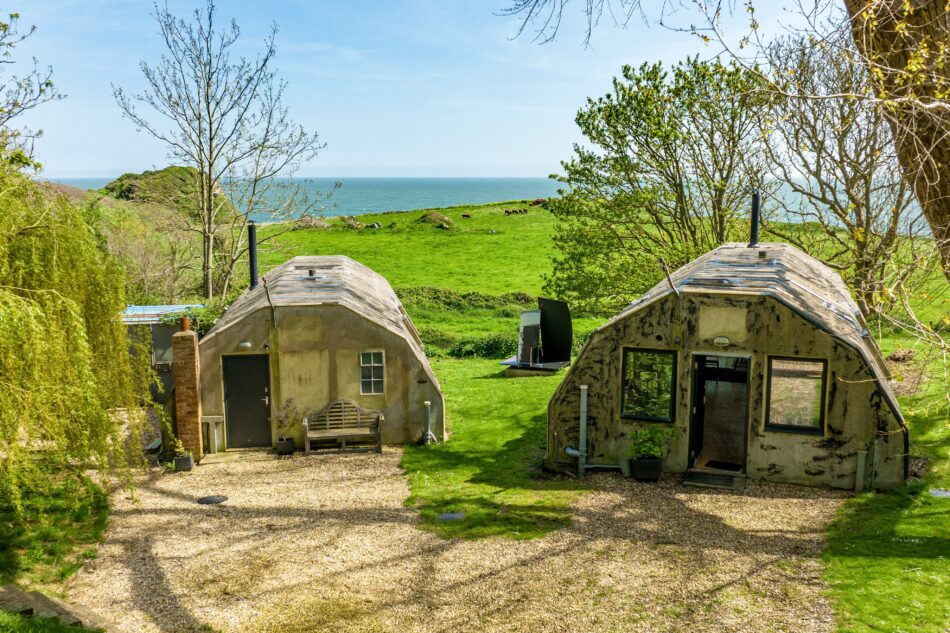




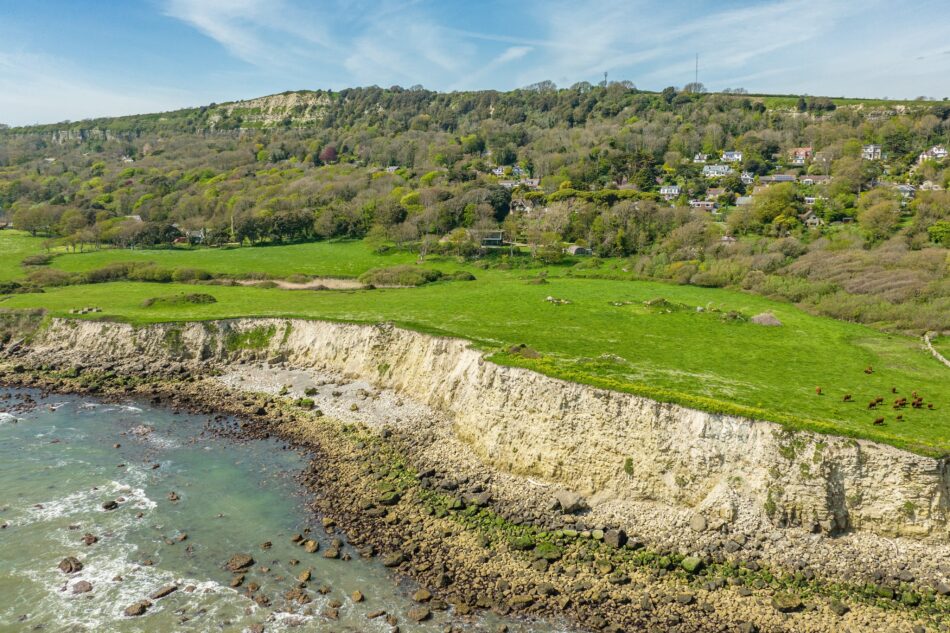
The Bunker
Ventnor, Isle of Wight
Architect: Lincoln Miles
Register for similar homes“A meeting of art and architecture”
On the wild southern coast of the Isle of Wight, a former World War II bunker nestles before the dramatic backdrop of the Undercliff escarpment in St Lawrence, near Ventnor. Resting on an acre plot and surrounded by SSSI conservation land, The Bunker looks out uninterrupted to the Channel and mainland Europe beyond. It is the beautifully realised concept designed by Lincoln Miles and his partner, the artist Lisa Traxler. In a meeting of art and architecture, the house makes the most of its breath-taking position with technical, material and aesthetic innovation throughout. The result is a superb home of around 3,000 sq ft that incorporates the existing concrete bunker as a stunning gallery space. In addition, two Nissen huts have been repurposed as studio workspaces and occasional rentals.
The Tour
The historical bunker served as a former Royal Air Force radar station and was ideally positioned to monitor the south coast of Britain during the World War II, as part of the Chain Home Network from 1941 until 1947.
It is reached along a private lane, and a curved driveway which gradually turns to reveal the house. A parking area for several vehicles becomes a more formal brick paved drive leading under a carport; its canopy a grassy mound that incorporates the building into the hillside. Beneath it is space for more vehicles, as well as access to the garage and convenient points of entry via the front door, utility and kitchen.
Externally, the house is a combination of fibre cement panels, glazing and the ingenious use of Richlite as brise soleil, all set against the sand-coloured concrete of the bunker and its blast wall. Richlite was chosen as the material for the fins for its resistance to the coastal elements and its angular perforations, designed by Lisa Traxler, are a nod to the ‘dazzle’ patterns of camouflage attributed to the marine artist Norman Wilkinson. The doors and windows use a prototype framing system developed by the designer, employing CNC and paper composite material to achieve their massive spans and heights, which exceed three metres in places, while minimising the frame profiles.
Inside, a long corridor links the two ground floor portions with the kitchen and living space in the south western corner and the bunker occupying the eastern section. Its towering concrete walls create a monolithic cave-like setting and have been used by the current owners as a gallery and events space, though it could be brilliantly repurposed for entertaining, dining or a recording studio.
Polished concrete with underfloor heating runs underfoot and is set against walls of fair-faced blockwork and spruce cladding overhead. The result is a stripped-back aesthetic that belies the fastidious engineering throughout.
A lightwell separates the dining space and kitchen which is arranged around a worktop enamelled in Traxler’s ‘dazzle’ design. From here, a cast concrete staircase curves down to the double-height living space where there is a log burner, its chimney wall clad in bubble-gum aluminium. A wall of south-facing glazing offers sea views beyond rolling fields from both levels.
The corridor contains a mass of storage behind plywood doors and leads to an excellent two-level utility room. There is also a guest WC on this level. The staircase leading to the first floor is also formed from Richlight and echoes the ‘dazzle’ theme in its perforated balustrade.
The first floor is constructed in CLT and clad in the wonderfully light reflecting spruce, further accentuated by the space given to the generous landing. There are three bedrooms in this part of the house, one doubling as a library.
The two master bedrooms are oriented to the south, enjoying the same seas views and share of a wide balcony. Pocket doors blur the boundaries and the flow of the level, from bedroom to dressing room and bathroom allowing for an open plan arrangement when desired. There are two bathrooms between the rooms in which oiled composite cladding has been used to great effect on the walls.
The house is powered by air source heat pump and has planning permission for photovoltaics on the roof.
Outdoor Space
The plot of just over one acre, acts as a grassy extension of the surrounding fields with a gentle border of trees between them. Positioned to the southeast if the main house are two Nissen huts which would have been occupied by defence forces during the Second World War. These have been wonderfully repurposed as studio spaces from which the current owners work individually. They are clad in OSB, insulated and each contains a log burner and washing facilities. The huts could easily be run as holiday lets or used as ancillary accommodation.
Additionally, there is planning for an ancillary Gymnasium benefitting from full height expanse of glass looking out to sea.
The Area
The Bunker’s position at the foot of the tiny village of St Lawrence, and its far reaching views across the Channel, offer a blissful sense of seclusion and tranquillity. However, the seasonally bustling resort of Ventnor is less than ten minutes’ drive to the east. Its sandy beach lies below tiers of Victorian seaside homes and beach huts and the town has a plethora of pubs, restaurants and produce shops. Local eateries include The Seapot for a picnic-bench crab sandwich on the water, or The Brasserie at Hillside for a set menu of local produce. The Bonchurch Inn is a favourite pub for locals and visitors alike.
A short distance from the seafront, at the Western side of the town, one can stroll through the beautiful award-winning Victorian Ventnor Park which has a bandstand for outdoor events in the Summer. The park leads onto the famous Ventnor Botanic Gardens at the Undercliff, where the town’s micro-climate can be truly appreciated in a 22-acre sub-tropical paradise. A short walk from here lies Steephill Cove, one of the Isle of Wight’s best kept secrets, renowned by those in the know as one of the most relaxing beaches on the island.
Further up the coast are the larger towns of Shanklin, which is home to the Shanklin Theatre, and Sandown, also known for its vast golden sandy beach.
Access to the island is by ferry, either from Portsmouth, Lymington or Southampton. There are good rail connections to all of the port locations, with trains from London to each being around two hours. Vehicle-carrying services arrive into East Cowes, Fishbourne and Yarmouth. Each is no longer than 30 minutes’ by car to the house.
Council Tax Band: E
Please note that all areas, measurements and distances given in these particulars are approximate and rounded. The text, photographs and floor plans are for general guidance only. The Modern House has not tested any services, appliances or specific fittings — prospective purchasers are advised to inspect the property themselves. All fixtures, fittings and furniture not specifically itemised within these particulars are deemed removable by the vendor.






